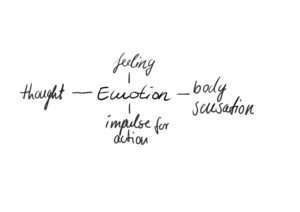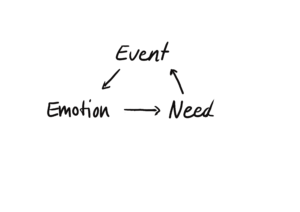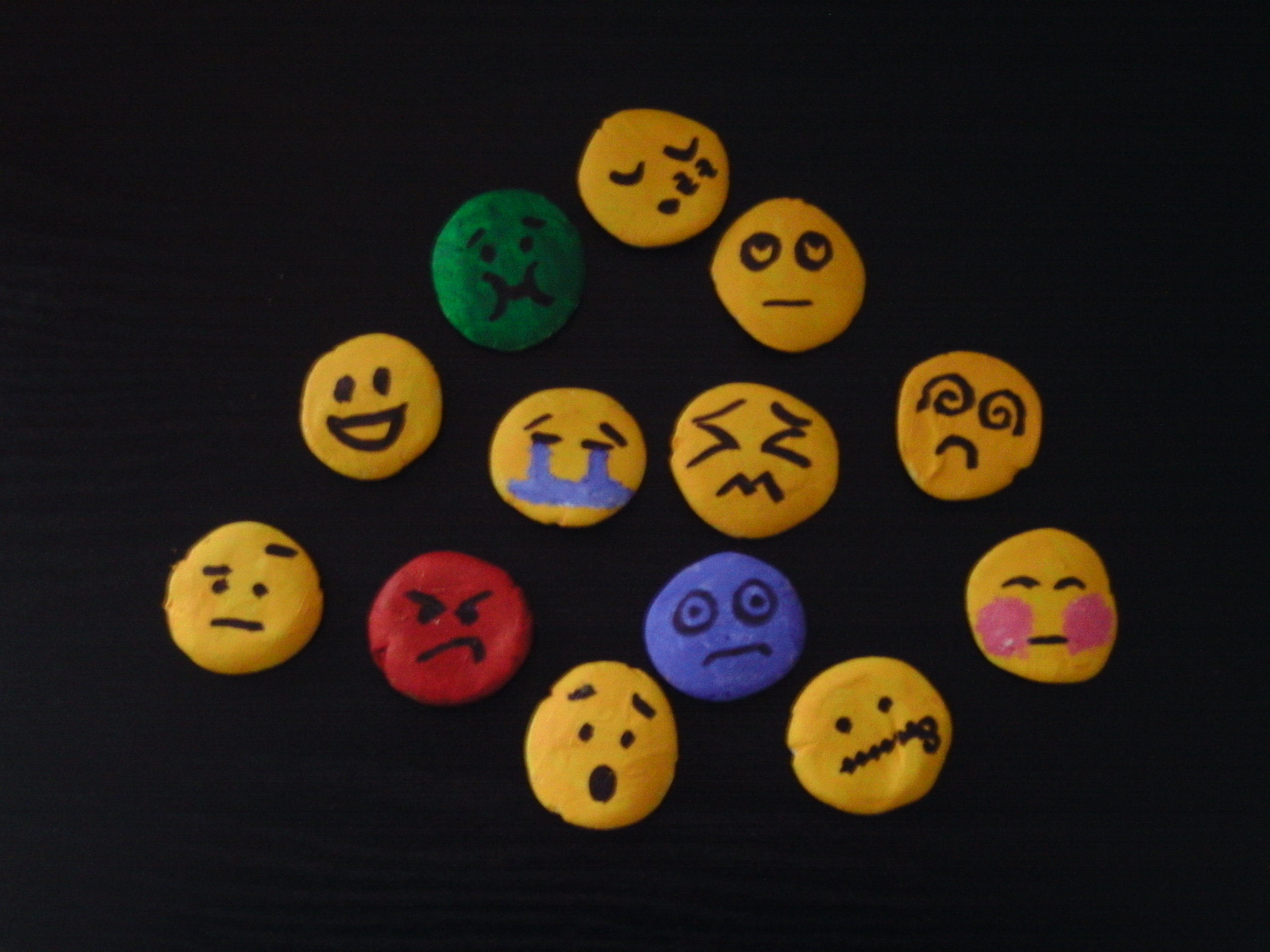Humans feel emotions for a reason and it is not to torment us.
Our brain is created with different levels. Roughly speaking there is a part that we share with reptilians that holds reflexes and instincts, a part we share with mammals that is responsible for emotions and a part that is limited to humans only, that is where we do all our complex thinking.
This hierarchy had proven itself useful for survival. While our neocortex is good at thinking it is also slow compared to the other brain systems. When we see a lion approaching, we don’t need a pro&contra list of how to react to that. We need something that will get us moving. And that is emotion.
Emotions are supposed to give us information about ourselves, our relationships or the world around us. They support our survival, help us navigate connection within our social group and protect our boundaries.
Emotions are not just a feeling and we cannot look at them separately from the other elements that are connected to them.
Event
Feelings are a response to some kind of event. They don’t just happen without context. The ‘event’ could be something that happened on the outside, like
- behavior,
- situations or
- words.
These events are easier to detect and sometimes we can find a trigger that brought up old emotion in addition to the present one.
Events can also be internal. They can be
- thoughts
- memories
- fantasies
- worries
- assumptions
- expectations
- wishes or
- other feelings
Body sensations that can trigger emotions are our
- pain
- posture
- breathing,
- facial expression,
- muscle tension,
- blood pressure,
- hormones,
- blood sugar levels
- metabolism or
- fatigue
If you have DID, they can also be triggered by inner events with parts like
- conversation and opinions
- emotional expression
- interactions
- needs
- conflict

the four sides of Emotion
Body sensation
This is how we perceive a feeling in the first place. Different feelings manifest in different sets of body sensations that we identify as a certain emotion. When we are numb for our body it gets more difficult to feel emotions. We might first have to develop a certain tolerance to sense our body before we can dissolve the numbing of our emotions. The body sensation is a cue that needs interpretation.
Thoughts
Our thoughts are closely intertwined with our feelings. They are our tool to interpret the body sensations we perceive. They can also support an emotion and influence its intensity. Research shows that if the body sensation is ambiguous we will use our mind to reflect on the event and use that as guideline for our interpretation. Unspecific high arousal levels eg are interpreted as excitement, sexual arousal or fear, depending on the situation.
Impulse for action
We need a reaction to the situation, a quick decision has to be made. The sensation of the emotions leads to an urge to act according to it. If we are scared we feel the urge to hide or run. If we feel disgust we will drop the spoiled food and avoid eating it. If we are happy about being in company we will laugh more frequently to give a social cue that increases the sense of connection.
Behavior
We manage the situation by reacting to it. Ideally our actions will meet our need that surfaced in the event and the emotion will automatically be regulated if the reaction was satisfying. But our behavior is not always identical to the impulse for action and shouldn’t be. If my impulse is to slap my boss in the face I will lose my job if I just act without a filter, and that does not meet my needs long-term. Usually only kids act on their impulse without some additional control through the mind. Because today it is not a life or death situation we can take the time to double check our actions.

As you can see there is more to an emotion than just having a feeling. It is a complex mechanism that was meant to help us to get our various needs met.
When we are dealing with emotions it is helpful to focus on their purpose and meaning instead of an evaluation whether a feeling is good or bad. There really is no such thing. There are comfortable feelings (to show us what to keep doing) and uncomfortable feelings (to show us that we need to change something), but in the end they are all helpful to navigate life.
Emotions are involuntary. It means that we cannot choose how to feel and then just feel that way. I am sorry if you were taught that, it set you up for failure. While we cannot choose our emotions, we can absolutely influence them into one direction or the other, increase or decrease them and find behaviors that will help us to regulate them.
Emotions don’t last forever. It might sometimes feel like it, but there is an ebb and flow to them. If they last for a very long time, we might be doing something to keep them alive, like adding thoughts over and over again to kindle the fire.
Emotions are not a problem. If they are grounded in the present, they point us towards important actions. The problem we experience with PTSD is emotional hijacking. Emotions that are influenced by trauma cycles overpower our thoughts and behaviors so that we end up in flight/fight, a more primitive response system, to meet the basic need of survival. More
To help us navigate our emotions we need to look at
hyperarousal and our window of tolerance,
discrimination and reality checks
identifying emotions
regulating them
and needs


Leave a Reply